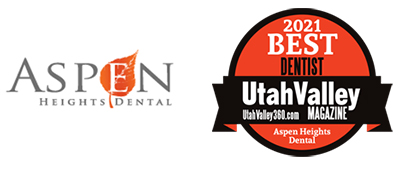
Digital impressions refer to innovative technology that allows dentists to use lasers and other optical scanning technologies. It produces a virtual, computer-generated copy of the hard and soft tissues in the mouth without traditional impression materials that patients find cumbersome. Digital technology collects precise impression data in minutes.
Because it eliminates conventional impression materials, patients find it to be a straightforward treatment option. The dentist uploads the impression data to a computer used to build restorations without stone models.
Types of Digital Impression Technology
Dentists can now choose between two types of digital impression technologies. The first type captures the pictures as digital photography, providing dentists and dental labs with images. The latter captures the images as digital video.
Lasers or digital scanning can capture the images. Laser scanning uses focused light, which is both safe and exact. It records all the features of the teeth and gums. In comparison, it eradicates the patient’s necessity to hold uncomfortable equipment in their mouth. Digital optical scanners are safe, but teeth must be powder-coated with a specific spray before scanning. It ensures that it captures all impression portions.
Benefits of Digital Impressions
Digital optical impressions improve efficiency, productivity, and accuracy. By allowing dentists to e-mail the virtual impression to the lab instead of sending a conventional impression through the mail. Digital impressions can also create same-day dental restorations. Minimizing the need for repeated clinic visits and speeding up patient treatment. Other advantages of digital impressions are:
- It has improved image/impression quality for better-fitting restorations.
- Less chair time.
- There’s no need for unappealing impression materials that make some patients gag.
- Patients and the dental team will have a more relaxing and stress-free experience.
- Impression-taking errors are less likely, eliminating material inconsistencies, resulting in fewer restoration faults.
- Patients enjoy new technology and innovative dental care because they can see their impressions on a screen chairside. As a result, they become more interested in and educated about the treatment process.
- A scan of the teeth is to be restored in three-five minutes, and the opposing teeth and bite may be performed.
- The digital impression may be retained electronically indefinitely, saving space, facilitating recordkeeping, and promoting a paperless environment.
- The use of disposable plastic trays and impression materials, which would otherwise pollute landfill space, is abolished using the “delete” button in green dentistry and eco-friendly elements.
How are Digital Impressions Different from Traditional Impressions?
Traditional impression-taking may need various materials and, sometimes, additional stages. Because this is a sensitive process, mistakes are more likely to occur in the many processes involved. Whether due to human errors or material faults, such as voids, air bubbles, poor setting, or distortions.
Traditional imprints require a lot of guessing and labor, while digital impression equipment drastically decreases or eliminates inaccuracies. Simultaneously, they save time with the impression appointment and the restoration delivery.
Digital impression machines eliminate the need for a follow-up appointment since the restoration may be done in the dentist’s office rather than sent to a laboratory. If they are not created in the dentist’s office, the repair may be fabricated faster since the working time is eliminated with traditional materials.
Digital impressions eliminate the requirement for traditional impression materials to be placed in the mouth for up to five minutes. Patients who are afraid of gagging or who are claustrophobic will feel more at ease throughout treatment because of this. Due to this modern technique, many patients have finished much-needed dental work, which they may have avoided due to traditional impressions.
In the traditional way, a negative captures a classic impression, making it more difficult to spot errors. If errors are discovered, the dentist will need to take new impressions, and patients will have to repeat the procedure. It results in increased expense and material usage. This is avoided with digital impressions.
A digital scan allows dentists to examine the positive picture, magnify it, and thoroughly assess it. The dentists may immediately address any errors before sending the imprint to the laboratory. With traditional impressions the dentists use visual evaluations to evaluate whether physical impressions are ready to be moved to the laboratory.
If there are any sections of inadequate tooth reduction, the system will color-code them. It enables dentists to make quick adjustments to the amount of tooth reduction to verify that proposed restorations fit comfortably and perform effectively.
Some digital impression systems (like the Lava C.O.S.) allow the operator to patch a missing spot in the original digital scan without retaking the entire imprint.
Reach Out to Aspen Heights Dental
Digital impressions are becoming increasingly popular among dentists. It is possible to acquire correct impression data more rapidly using digital technology than traditional dental impressions. It reduces the need for dirty impression materials, allowing patients to have a more pleasant experience.
The data from a digital impression may be uploaded to a computer, then be utilized to generate the restoration. This method frequently eliminates the need for a traditional plaster model. Contact Aspen Heights Dental for your digital impressions.
